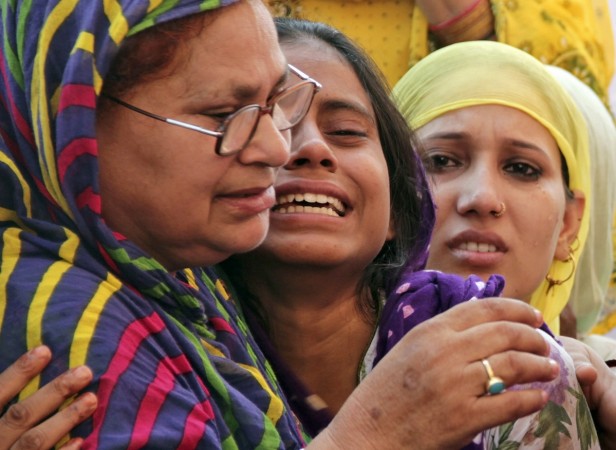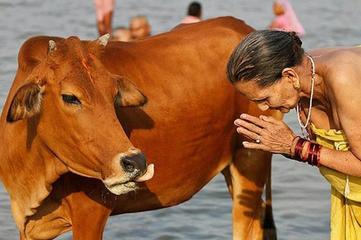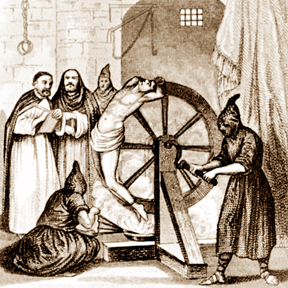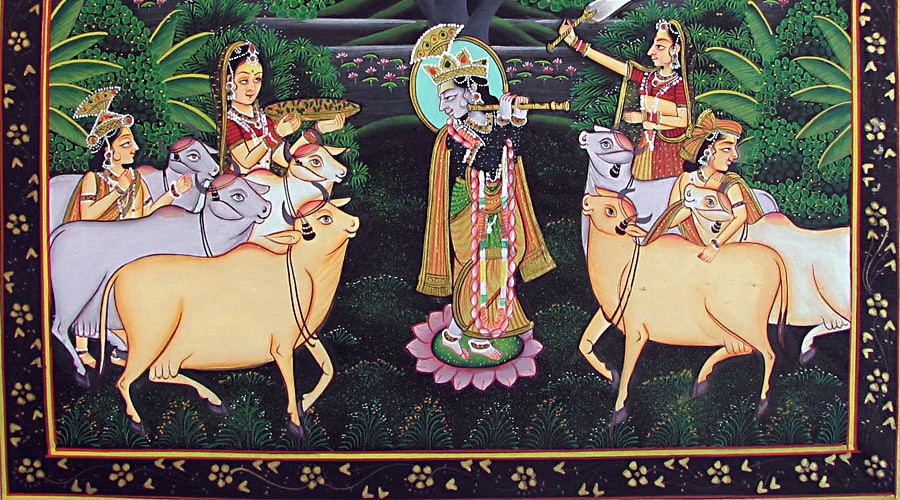“Auschwitz begins wherever someone looks at a slaughterhouse and thinks:they’re only animals.” – Theodor W. Adorno
On 30 September, the Delhi edition of the Indian Express carried an unspeakably revolting story of a man, lynched to death by a mob, in neighboring Noida (Uttar Pradesh), purely on the suspicion of having consumed beef.

Dadri beef lynching
The details appear to be rather hazy and the report seemed eager to conclude hurriedly the absence of any background of violence or conflict in the area.
Soon, the beef-eating angle got quoted enough number of times for it to become self evident truth, as in the false case of broken church windows, earlier in the year. Alas, the news is so disturbing that it makes one want to disbelieve it.
Of course, it goes without saying that regardless of the motive of the murder and any history of localized conflict in the place, the perpetrators of the crime must be booked and the harshest possible punishment, as provisioned by the law, meted out to them.
The ban on cow slaughter is applicable in many states in India, particularly in the North. In Uttar Pradesh, the slaughter of cow (includes a heifer and calf) is totally prohibited under the Uttar Pradesh Prevention of Cow Slaughter Act, 1955.
Just to emphasize the obvious here, the law is sixty years old, has been enacted at the level of the state and has little to do with the current regime at the Centre.
However, the purpose of this piece is not to delve into the nuances of law but rather to try and figure out the dynamics of morality and social order in the Indian context that necessitated the enactment of such laws in the first place.
In doing so, there is no attempt to recommend a magical solution to the political problem but only the intent to highlight the issue from the Hindu point of view and in this way, provide a much ignored perspective to the debate.
In her meticulously researched book on the place of animals in Hinduism, Nanditha Krishna writes,

“The reverence for the [cow] has been one of the central themes of Hinduism since ancient times. The animal is equated to one’s mother, because she gives milk, hence the expression ‘Gaumata’ (cow mother)… the mother because cow’s milk is the first replacement for mother’s milk.”1
Practising Hindus (especially, non vegetarians) are often confronted with questions about their peculiar dietary choice of abstaining from beef consumption. It is a question that stumps many, evoking responses that range from apologist pleas (red meat is not good for health) to clever rationalizations (beef is tamasic, it makes your mind dull), though one must acknowledge both to be valid reasons.
The question, in a sense, is rhetorical. For you cannot expect a single line explanation for a belief that springs from one’s fundamental assumptions about life or from one’s world view. It is like asking someone to pick one from four pre-decided objective choices as to why they love their spouse. Therefore, to get a genuine answer, we must start from Hindu cosmology and dig into puranas and other scriptures.
The churning of the ocean (Samudramanthan) is perhaps the most popular story from the Bhagwata Purana, rich with symbolism on diverse and complex themes such as non duality concealed by polar opposites, different stages of kundalini awakening and the Universe as an expression of divine Yajna.
The very first living being to appear from the act of churning is Surabhi, the wish fulfilling cow. The same Surabhi, in other Puranas, is said to be born of the divine progenitor Kashyapa and his wife Krodhavasa. She is also called Nandini (delight) and Aditi (mother of all cows) and can grant any wish to the true seeker.
Interestingly, there is no temple dedicated to Aditi and she is thus worshipped directly in the form of the living cow. The cow is frequently associated with Lord Krishna, also known as Gopala (cowherd), portrayed as holding a flute while standing beside a cow. Sanskrit synonyms for cow, Aghnya and Ahi, translate to ‘one that must not be slaughtered’. The dharmic outlook finds animals subject to the cycle of death and rebirth, working out their karma just like pretty much the rest of the Universe, humans included.

Hindu (and by extension, Buddhist and Jain) ethics do not privilege human beings over other species and it is hard to miss the keen ecological awareness in the assertions about harmony between panchabhutas (five elements) that constitute all that we can sense.
While there is a remarkable feeling of fraternity with all creatures in general, it is in the veneration of the cow, specifically, that we find the trigger for the larger sense of goodwill towards the animal kingdom and further, for the uniquely dharmic ideal of Ahimsa (non harming), which makes India the country with the lowest per capita meat consumption in the world.2
This is in sharp contrast with the Abrahamic view that declares animals as soulless entities created by the powerful ruler of the Cosmos for use by man, with the result that it has been unleashing uninterrupted violence on animals for the last two millennia.
As Vamsee Juluri puts it,
“Watch any wildlife show on TV. The story is told almost always around the hunt, and the act of killing, bloodshed, and dismemberment. A story is a creative selection. There are other ways of telling stories about nature. Yet, our dominant structure is predicated on killing. That’s a hunter-gatherer’s view of nature. Not a Hindu one.”3
While we are indulging in comparisons between the Indian and Western, Hindu and Abrahamic, let us shift our attention to their respective philosophies of social order. The western approach, particularly after European enlightenment, has been the rights based individualistic model, an open departure from the prescriptive morality of the Ten Commandments.
It is a bottom up alignment of needs that exclusively and obsessively focuses on the individual as the ultimate storehouse of life. Taken too far, it leads to absurd conclusions such as “Animals don’t have rights because they don’t pay taxes.”
In the western imagination, largely unchanged by the healing touch of evolutionary scientific thought yet, a forest is only a collection of individual trees just as society is only a collection of individuals. The whole is not greater than the sum of its parts, in fact less so, for it lacks the volition of the individual.
Therefore, the individual becomes the reference point for all rational examination. On the other hand, the Indian view is based on the supremacy of Dharma and the imperative to uphold it under all circumstances.
One of the most powerful expressions of the commitment to protection of the Dharma is the martyrdom of the ninth Sikh Guru, Tegh Bahadur at the hands of the Mughal Emperor, Aurangzeb.
Social customs, laws and educational policies are built around Dharma, with the explicit motive of establishing a society whose members are virtuous rather than materially successful.
Professor Kapil Kapoor, in this eloquent presentation, talks about the complexity of the concept of Dharma, interpreted in accordance with the particular context as attribute, function, duty or intrinsic nature. But as Rajiv Malhotra warns us,
“The frequently leveled charge of moral relativism against this contextual morality is inaccurate because the conduct and motive are considered consequential in judging the ultimate value of statements. The degree of common good is the universal standard, and the well being of all creatures, in terms of non-harming (ahimsa), is the highest truth.”4
Sadly, in the political discourse in India and elsewhere, Dharma is simplistically mapped on to the alien category of Religion.
In his fascinating work on morality in American politics, Jonathan Haidt uses his Moral Foundations Theory to investigate the causes of the ever sharpening divide between the politics of liberals and conservatives.5
Liberals tend to score higher in the care / harm and least in the sanctity/degradation foundation while conservatives tend to have a more equitable preference for most of the six defined foundations.
The use of the western terms of right and left, however, leave much to be desired in the Indian setting. Clearly, with Ahimsa as the highest ideal, Dharmic ethics are strongly biased towards the care / harm foundation even while remaining broadly committed to other foundations as well, though it is another matter that the very definition of some foundations may require amendments, when spoken of in the Dharmic context.
A cursory assessment of contemporary political discourse in the mainstream media reveals a misinformed attempt to club the Hindu ethos with the conservative politics of White Protestant Christians by labeling it as Right Wing.
In the light of the decidedly Indian pursuit of higher states of awareness through Yogic and other practices, prevalent among common Hindu folk in varying degrees, there is perhaps a need to develop an Indic Y-axis to complement the left-right one-dimensional categorization of the political number line of the west, to give a more accurate account of one’s coordinates on a globalized moral map.
Another fact mostly ignored in the popular media discourse is the history of cow slaughter, especially under Muslim dynasties between the 13th and 18th centuries. It is an incontestable fact that Hindus were intimidated and converted, often by brutal attack on this vital point of Hindu sensibilities, the holy cow.
Whether it was Sikander Butshikan, the iconoclast of Kashmir or Firuz Shah Tughlak in Kangra, cow slaughter, followed by force feeding the meat to Hindus, seems to have been a powerful strategy to effect mass conversion.
It is also recorded separately how Christian missionaries, starting from the Goa inquisition, often tested the loyalty of the new converts by asking them to partake of a meal whose carefully chosen ingredient was beef.

Goa Inquisition
Ironically, Goa derives its name from the original ‘Gomantaka’, translated as the ‘region of cows’. It is hardly surprising that despite numerous systematic attempts at whitewashing Indian history, Hindus continue to retain a sense of soreness when it comes to matters concerning the slaughter of cow.
It must be also mentioned that while the slaughter of cow is a touchy topic, not many care for the well being of the stray cows that are abandoned by the predominantly Hindu farmers as soon as they stop producing milk.
Not surprisingly, it is in this utter disregard for the well being of the stray cow that we find a common ground between the beef-devouring rebel and the beef-banning radical, simply because none of them has ever had an intimate contact with the animal, to know and acknowledge first-hand, the transformative potential of an adoring relationship with the cow.
On the other hand, take the example of the Bishnois, a Hindu community from Rajasthan, who maintain the age old tradition of nurturing and protecting all plant and animal life around them.
In 1730 CE, 363 Bishnois sacrificed their lives to protect the Khejri trees from felling, proudly proclaiming that their lives were a small price to pay for protection of the forest. The astounding depth of ecological bond that this community formed with their environment was the seed that germinated the much-celebrated Chipko Movement centuries later.
The astonishing commitment of the Bishnois is a good starting point to enter into a philosophical debate about what really constitutes that we call our right of ownership and the right to consumption.
If the western mode of individualistic morality, which essentially fuelled colonial expansion, is applied, then it is fair to say that whatever we can control, conquer or usurp rightfully belongs to us.
However, from a Dharmic perspective, all life is sacred and it is in upholding the natural order of the Universe, through the principles of Ahimsa, that limiting concepts like ownership and possession can be transcended.
For a Hindu, the cow is the gateway, the threshold to a non-harming peaceful co-existence on this planet. This spiritual reverence for the cow simply cannot be allowed to be reduced to sectarian hatred for the perceived other.
At the same time, a Hindu is also duty bound to protect the animal from all kinds of harm, including abandonment, slaughter and mistreatment. To a Hindu, this vow is hardly majoritarian tyranny, driven as it is by the need to protect powerless animals and not to impose dietary restrictions on non-believers in the Abrahamic sense.
Any conversation on this matter needs to take this into account. But is our sensation driven corporate media tuned in to this?
References
- Nanditha Krishna, “Sacred Animals of India”, Chapter: Cow
- Report by Food and Agricultural Association, United Nations, 2007
- Vamsee Juluri, “Rearming Hinduism”, p 90, Chapter: The myth of Vedic violence
- Rajiv Malhotra, “Being Different”, p 196, Chapter: Order and Chaos
- The book referred to is ‘The Righteous Mind: Why good people are divided by politics and religion”
Ashish Dhar, a Mechanical Engineer and an entrepreneur, lives in New Delhi. He is co-founder of pragyata.com, an e-learning portal dedicated to Indic knowledge systems.

